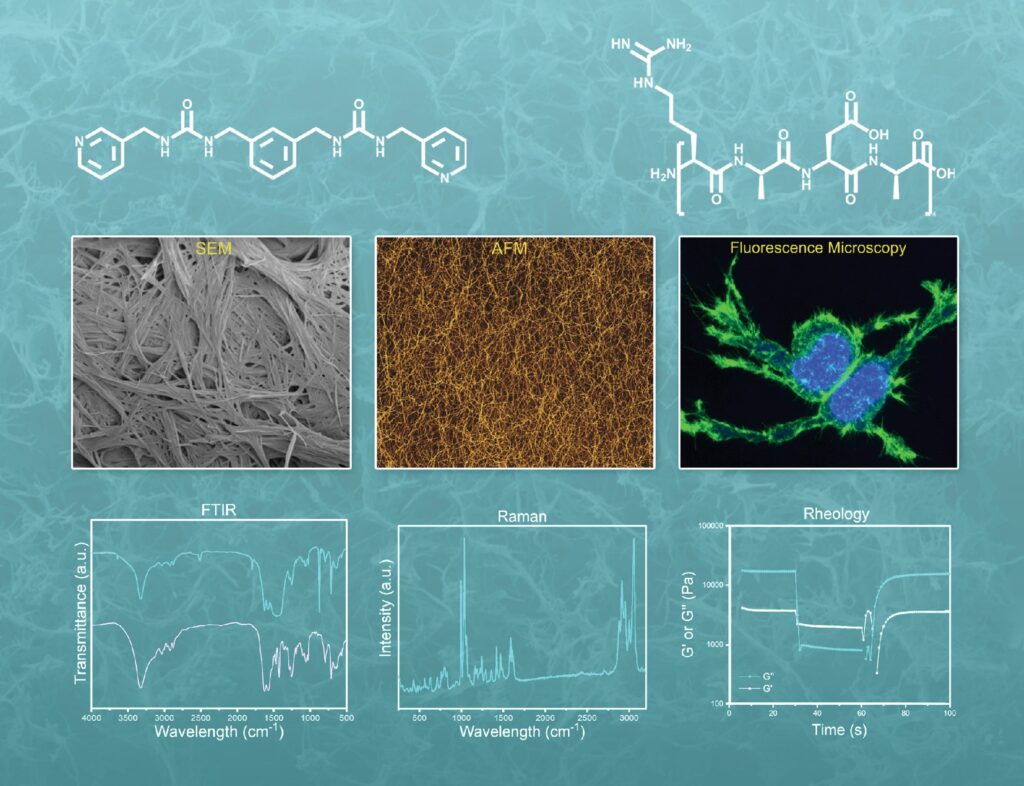
Hydrogels can be formed from polymers or from small molecules, from either natural or synthetic sources. Further, they can be classified by the types of bonds that form the hydrogel network – either covalent or non-covalent. Supramolecular hydrogels, particularly those formed from the non-covalent self-assembly of small molecule gelators, are relevant for biomedical applications because they have interesting properties. For example, some can be injected through a needle (like a liquid) and reform into a solid structure, and they mimic the hydrated microenvironment of cells in the body. One such type of novel supramolecular hydrogel developed by IMDEA Materials is based on a bis-urea derivative (Figure 1), which has shown unexpectedly good results in supporting the viability and growth of cells [1]. Another example, also developed by our Institute, uses self-assembling peptides to form a nanofibrous hydrogel network [2]. We have state-of-the-art equipment to enable the characterization of the chemical, mechanical, and morphological properties of both the gelator compounds and the hydrogels [3] and new cell culture facilities to evaluate their cytocompatibility.

[1] Rutgeerts, L.A.J., Soultan, A.H., Subramani, R., Toprakhisar, B., Ramon, H., Paderes, M.C., De Borggraeve, W.M., Patterson, J. (2019). Robust scalable synthesis of a bis-urea derivative forming thixotropic and cytocompatible supramolecular hydrogels. Chemical Communications, 55 (51):7323-7326.
[2] EzEldeen, M., Toprakhisar, B., Murgia, D., Smisdom, N., Deschaume, O., Bartic, C., Van Oosterwyck, H., Sousa Pereira, R.V., Opdenakker, G., Lambrichts, I., Bronckaers, A., Jacobs, R., Patterson, J. (2021) Chlorite oxidized oxyamylose differentially influences the microstructure of fibrin and self assembling peptide hydrogels as well as dental pulp stem cell behavior. Scientific Reports, 11:5687.
[3] Denzer, B., Kulchar, R., Huang, R.B., Patterson, J. (2021). Advanced methods for the characterization of supramolecular hydrogels. Gels, 7(4):158.
For more information, reach us at proyectos.materiales@imdea.org

